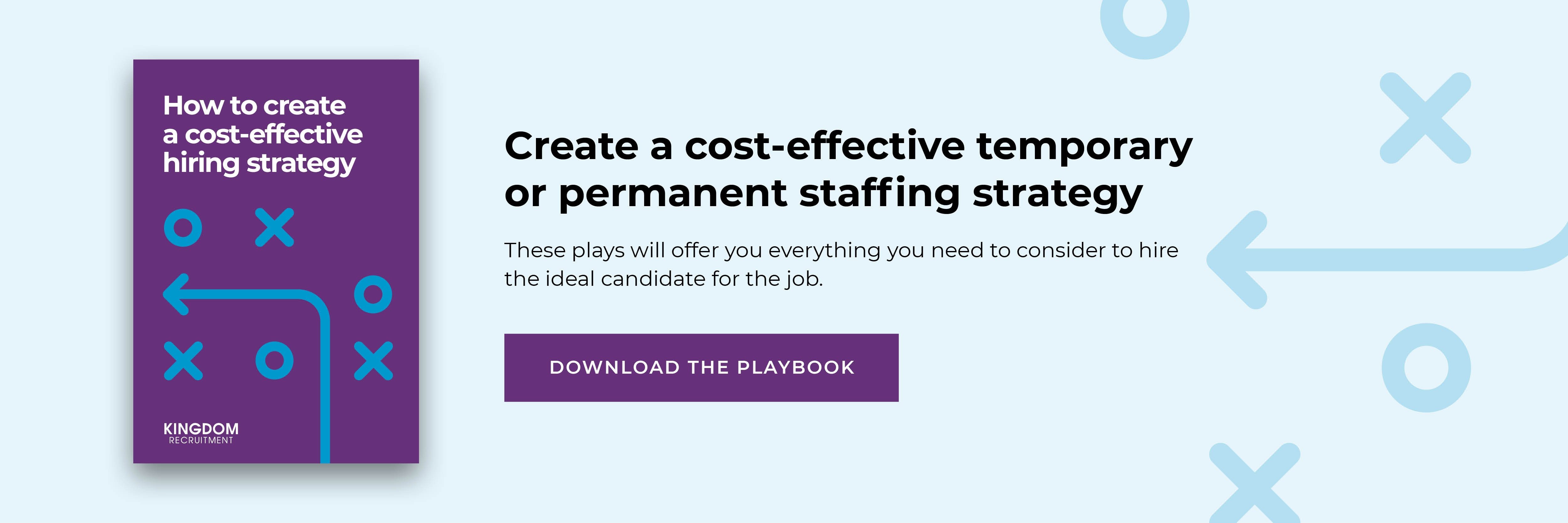Skills gaps in your team will reflect where more training is needed or where new talent should be hired. To understand your business’ needs properly, creating a skills map is essential. Knowing the skills your employees possess will help you plan your workforce — while it's also essential for employees to know where their skills gaps exist so they can grow and do their jobs successfully,

A skills map will evaluate the competencies of your employees and offer better insight into what your business needs to grow. Here's what you need to know about skills mapping in recruitment and how you can implement it within your organisation.
What is skills mapping?
Skills mapping, also known as competency mapping, is a visual strategy that focuses on evaluating the skills of employees. Its main objective is to gain an understanding of the current skills and competencies in the organisation while also identifying skill gaps.
A job competency is defined as an underlying characteristic of a person, such as a motive, trait, skill or body of knowledge. Skills mapping can be used across a variety of roles and is particularly useful for HR professionals and managers.
By comparing the skills you need with the existing skills, you can easily identify gaps and work to overcome them. With this knowledge, you can manage your team's skills and prevent any mistakes. It also means employees can manage their professional growth while managers can oversee training and opportunities based on the gaps.
What are the benefits of skills mapping?
Through mapping the skills your organisation needs and presenting them clearly, you’ll gain greater clarity and insight into what your company requires to succeed.
Sometimes you’ll find only a select group of employees can complete a certain task to the required level. With a skills map, you’ll identify exactly which tasks are crucial to your organisation. As a result, you can highlight which employees would benefit from additional training.
You’ll also pinpoint who your most valuable employees are and which employees are specialists and generalists. That way, you can create an ideal candidate profile to replace an employee who suddenly leaves your company.
It's also useful for when team members are off sick. You can instantly identify who's best placed in the organisation to cover based on their skills.
Plus, you can track the progress of each department, team and individual and eliminate any guesswork that comes with identifying skills or development opportunities.
How to implement skills mapping
The best way to assess proficiency levels is by using a skills matrix. This will show a snapshot of your employees’ skills, all laid out in front of you. Generally, the best way to do this is to create one skills matrix for each department or team. List your employees’ names and their names down the left-hand column and all their skills across the top row. You can then enter the proficiency levels for each employee and each skill until the matrix is filled.
Here's an example you could use for inspiration:
To ensure your skills matrix contains all the right information, follow the below steps:
1. Conduct a skills assessment
Before you can identify proficiency levels, it’s important to define which skills you’d like to assess. That’s why you’ll need to conduct an assessment to map your employees’ skills.
2. Don’t add too many people to the matrix
One of the greatest benefits of skills mapping is the clarity it delivers. So for optimal clarity, don’t include all of your staff and every skill in one go. Instead, split your employees into teams or departments and choose the skills relevant to each group of employees. It’s also better to create separate matrices for soft and hard skills.
3. Stick to the most important issues
The variety of issues for skills matrices are almost limitless, however, it’s important not to make them more complex than they need to be. That’s why you should stick to the most important skills, tasks, competencies and qualifications for each role to ensure clarity is maintained.
It's also essential to have a strategy in place to determine who you need to hire, how you'll hire them and how you'll onboard new starts — all while remaining cost-effective. Our new playbook will help you create a cost-effective hiring strategy and offer everything you need to consider to hire the ideal candidate for the job.
Discover how to create a cost-effective hiring strategy
Creating an effective hiring strategy is essential to business success. This strategy needs to determine who you’re going to hire someone, how you’re going to hire them and when. The playbook is packed full of plays, tips and advice with topics ranging from creating a successful onboarding plan, measuring employee satisfaction levels, building your workforce plan and much more.
To get started and access these insights, click the banner below today.
.jpg?quality=low&width=1366&name=057eb20341e70b5126567e851d3e7304%20(2).jpg)

%20(1).jpeg)